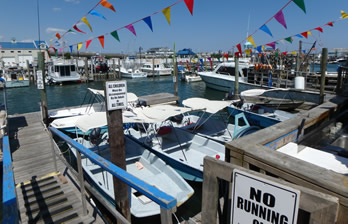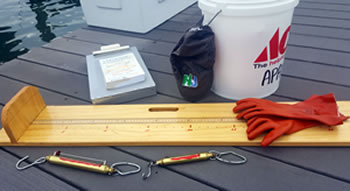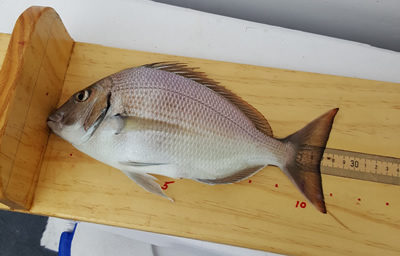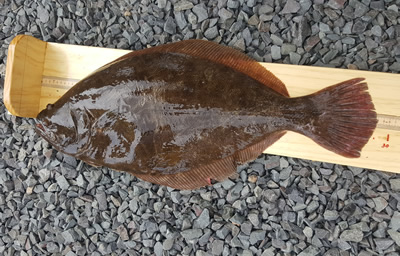by Elizabeth Lange, Hourly Fisheries Technician
NOTE: This article is one in the series, A Day In the Life Of a Marine Fisheries Hourly.
I wake up early to prepare for my Access Point Angler Intercept Survey (APAIS) site assignment. The survey targets recreational saltwater anglers to obtain information about their fishing effort, catch and participation in marine recreational fishing and about the demographic, social and economic characteristics of those who participate in saltwater recreational fishing in United States waters.
Once I have verified my site, I check to make sure I have all of my gear with me. Each interviewer is assigned a set of gear which includes:
After preparing for the day, I am ready to leave for my site assignment. I get to my site and find the marina office to let them know I will be there for the day. I take a look around to get an idea of how my day will go. I see how many cars there are and how many boat slips are empty, this way I have a rough estimate of how many anglers I may be surveying. I find a spot to get settled and pick a location that has a good vantage point of the whole marina so I make sure not to miss anyone coming back from a fishing trip. Then I wait. I make notes throughout the day of what the weather and tide are doing, what kind of amenities are at that site, what is going on at that site that day, and many other things. No detail is too small. If something looks like it may affect fishing at that site, I write it down. Some days can be very slow, even a weekend day. I could be at a site on a Saturday and only survey two anglers. Other days can be extremely busy, and those days go by much faster. If some anglers I did not get a chance to talk to leave, I make a note that I counted them and that they fished. When I see some anglers come in from a trip, I make sure to let them get settled in before I go up and talk to them. I ask how their day went and if they caught anything. I let them know I am there to conduct surveys and ask them if they would like to participate. Sometimes they say no and that's okay, it's completely voluntary. If they agree to do the survey, I get started right away. Once I get through most of the questions, it's time to measure the fish they kept. I measure them with my bump board and take weight with a Chatillon scale. I write down all my measurements and make sure I completed the survey. I thank them for their time and wish them a good rest of the season. I go through this process until I have talked to every angler or until my assignment time comes to an end.
I go through all of my surveys for the day to make sure they are complete and legible. I finish up with some notes about the day, how the anglers responded if I had some refuse, and if there were anglers still out by the end of my time at the site. I gather up my gear and head home. Before I submit all of my paperwork for the week, I go over it one last time to verify I have filled out the forms correctly, compile it all together and fill out a delivery summary form as a reference for other APAIS staff. There are three locations in New Jersey where APAIS interviewers can submit their paperwork, so I go to the closest one, submit my assignments for the week, and collect any forms I may be running low on to make sure I never run out while in the field. Then I'm ready for the new week. Could You Be Intercepted While Fishing? 2016 Marine Digest Feature Article (pdf, 735kb) |
|||||||||||
|
||
|
|
||
|
||
| |
||




